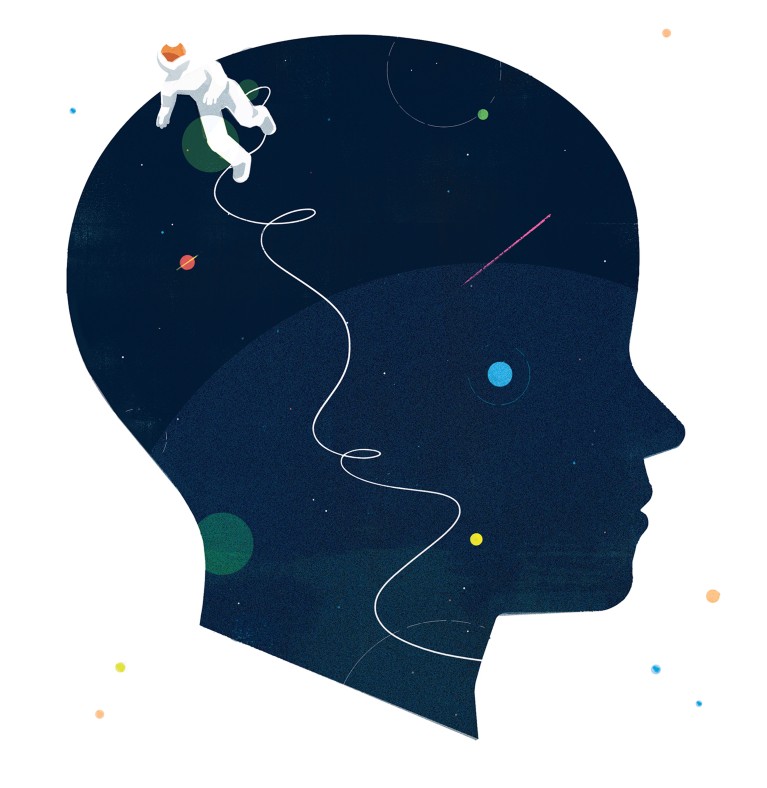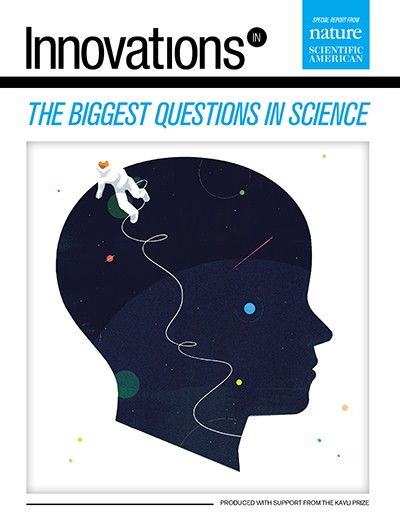
Illustration by Chris Gash
“We are all in the gutter, but some of us are looking at the stars,” Oscar Wilde wrote. Ever since an early human sat by the glowing embers of a fire on a winter night, as others fell asleep and the camp quietened, we have pondered the mysteries of existence. What are those points of light studding the sky? What are these movements within my belly? Where did this life come from? What is life? How do I protect this being from all harm?
Innovations In The Biggest Questions In Science
Such questions have occupied not only ordinary humans through the ages but also philosophers and, later, scientists. In recent centuries we have learned so much—and such marvelous things—about the worlds around and within us that it may sometimes seem that no nook is left unexplored, no miracles left for us to unravel. The truth is, though, that every new discovery leads us to ever deeper questions. We know what the stars are, but their motion defies explanation. We can look into the farthest crannies of the universe, but the more we see, the more we suspect that we may never, truly, understand it all. We have a good idea of how the body works, but the mind remains elusive. We know what life is but not where that first spark came from. We can observe unimaginably minute objects, but the more we try to control them, the more they seem to evade our grasp.
This special report on “The Biggest Questions in Science,” which is being published in both Scientific American and Nature, is sponsored by the Kavli Prize. It was produced independently by Scientific American and Nature editors, who have sole responsibility for all the editorial content. Beyond the choice to sponsor this particular topic, the Kavli Prize had no input about the content of the articles in this package.

 What Is Spacetime?
What Is Spacetime?
 What Is Dark Matter?
What Is Dark Matter?
 What Is Consciousness?
What Is Consciousness?
 How Did Life Begin?
How Did Life Begin?
 What Are the Limits of Manipulating Nature?
What Are the Limits of Manipulating Nature?
 How Much Can We Know?
How Much Can We Know?








